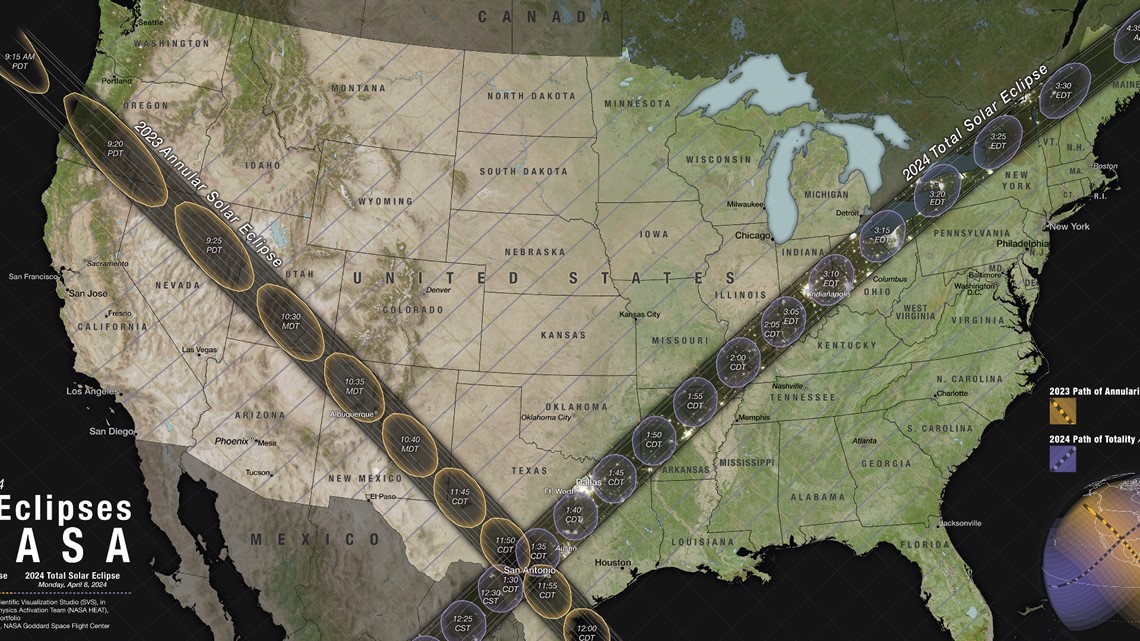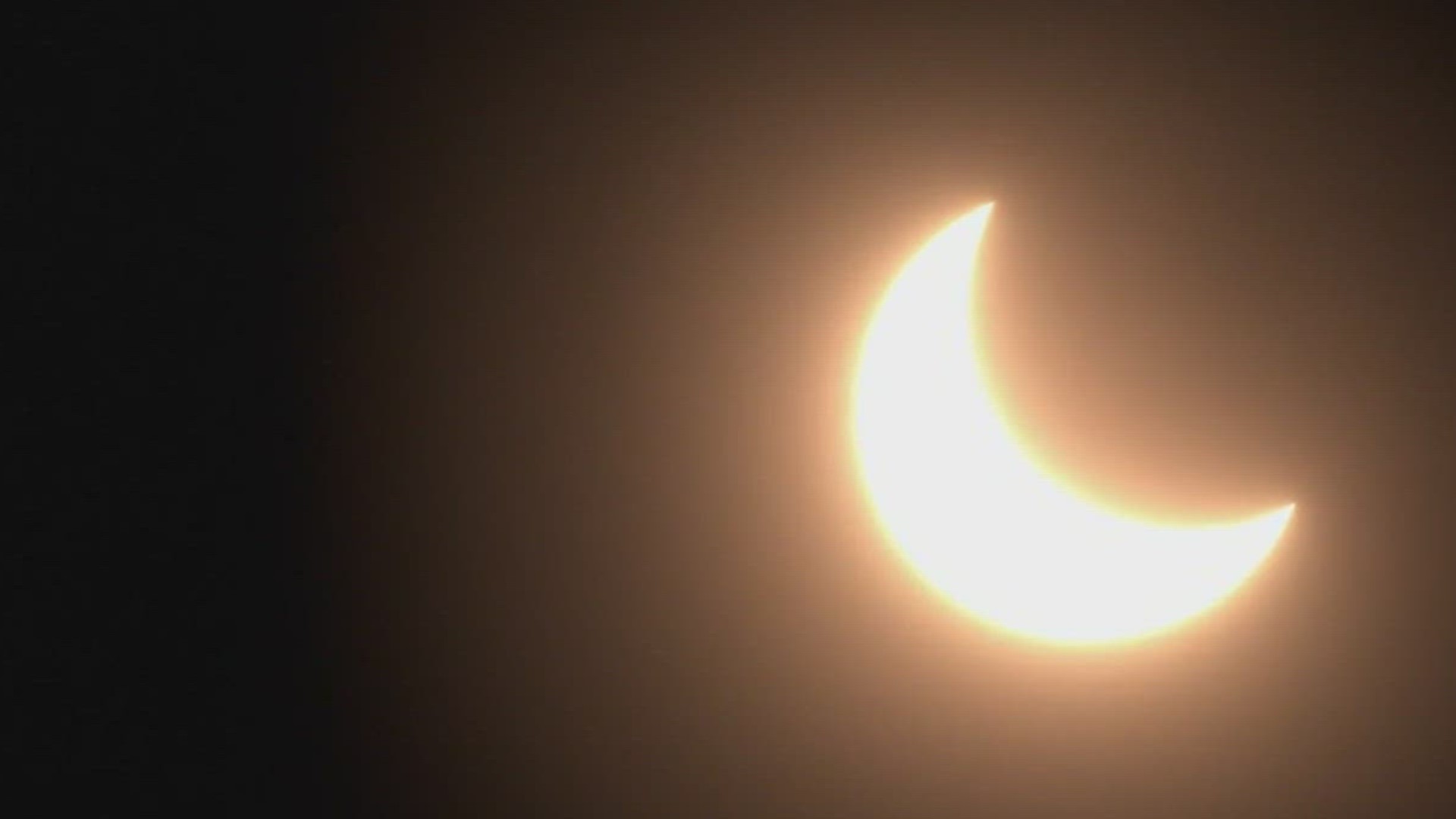CORTEZ, Colo. — Millions of people across the United States will have two rare chances to see a stunning celestial phenomenon.
The United States is in the path of an annular solar eclipse this month, while the next total solar eclipse will pass over 12 states in 2024.
Annular solar eclipse: Oct. 14, 2023
An annular solar eclipse will cross North, Central and South America this month.
The phenomenon will be visible in parts of the United States, Mexico and many countries in South and Central America on Saturday, Oct. 14.
The thin path of totality for this month's eclipse stretches across the United States from Oregon and down through the Four Corners region into southern Texas.
Colorado will get to see the celestial phenomenon as the path of the solar eclipse will pass over the southwest part of the state, including Cortez and Mesa Verde National Park, around 10:30 a.m.
In an annular solar eclipse, the moon passes between the Earth and the sun and forms a rare "ring of fire." The moon is at or near its farthest point from the Earth, so it appears smaller than the sun and doesn't completely cover it.
While southwest Colorado will see 90% of totality, other areas of Colorado, including the Denver metro area, will experience 70% to 80%. Denver will experience 78.7% totality, and Colorado Springs 80.8%.
Because the sun is not completely blocked by the moon during an annular solar eclipse, it is never safe to look directly at the sun without specialized eye protection designed for solar viewing.


Total solar eclipse: April 8, 2024
While the United States will see the annular solar eclipse on Oct. 14, 2023, a total solar eclipse will be seen Monday, April 8, 2024.
The 2024 total eclipse path stretches from Texas to Maine, meaning people in more than a dozen states could see totality — the moment when the moon appears to blot out the sun.
The closer you are to the center of the paths, the better. People outside the path of totality in the contiguous U.S. will still get to see a partial eclipse.
NASA said locations near the center will see the eclipse for longer than those on the outer edges. On NASA's map, the thin white lines inside each path indicate how long you'll be able to see totality there.
Inside the paths on the map, you'll see gold and purple ovals. NASA said these show the shape of the moon's shadow on Earth's surface at the times shown, meaning people inside the ovals will see the eclipse at those times.
While a solar eclipse can be a once-in-a-lifetime viewing opportunity, observers in San Antonio, Texas, will have the chance to see two just months apart. San Antonio is in the path of both the annular eclipse and the total eclipse.
You can explore the map in detail on NASA's website, or watch the agency's video tour.


SUGGESTED VIDEOS: Colorado Guide
> Top stories curated daily just for you! Sign up for the 9NEWSLETTER to get can’t-miss stories, Next and Broncos content, weather and more delivered right to your inbox.
MORE WAYS TO GET 9NEWS
Subscribe to our daily 9NEWSLETTER
Download the 9NEWS APP
iTunes: http://on9news.tv/itunes
Google Play: http://on9news.tv/1lWnC5n
HOW TO ADD THE 9NEWS APP TO YOUR STREAMING DEVICE
ROKU: add the channel from the ROKU store or by searching for KUSA.
For both Apple TV and Fire TV, search for "9news" to find the free app to add to your account. Another option for Fire TV is to have the app delivered directly to your Fire TV through Amazon.

